In my work I receive many clients looking for some fish or another aquatic organism that helps keep their aquariums clean and free of algae, among those options I always recommend snails! Gasteropods is a class that belongs to the animal kingdom and that includes the famous mollusks, among them snails and slugs stand out! We are used to seeing these organisms with our eyes, but are you not curious to see their life cycle under the microscope?🤩🤔😮
En mi trabajo recibo muchos clientes en busca de algunos peces o otro organismo acuatico que ayude a mantener sus acuarios limpios y libre de algas, entre esas opciones siempre recomiendo los caracoles! los gasteropodos es una clase que pertenece al reino animal y que reune los famosos moluscos, entre ellos se destacan los caracoles y las babosas! estamos habituados a ver estos organismos con nuestros ojos pero no te da curiosidad ver su ciclo de vida bajo el microscopio?🐌🐌🔬

ABOUT NERITIDAE🙂, SOBRE NERITIDAE🧠👨🎓👨💻

Before describing the neritin species that is the famous zebra snail, I would like to describe the gastropods a bit! We must emphasize that it is a class of arthropods with more than 41,000 described species from different bodies of water, so we can find snails in water: fresh, salty, in lakes, rivers, even terrestrial! It is not easy to describe the color because there is an immense range of colorations, and its size can range from a few millimeters to 8 centimeters!😶😮
Antes de describir a la especie neritina que es el famoso caracol zebra me gustaria describir un poco los gasteropodos! debemos resaltar que es una clase de artropodos con mas de 41.000 especies descritas de distintos cuerpos de agua, por lo que podemos encontrarnos caracoles en agua: dulce, salada, en lagos, rios hasta terrestres! no es facil describir el color porque hay una inmensa gama de coloraciones, y su tamaño puede ir entre unos pocos milimetros hasta 8 centimetros!😲
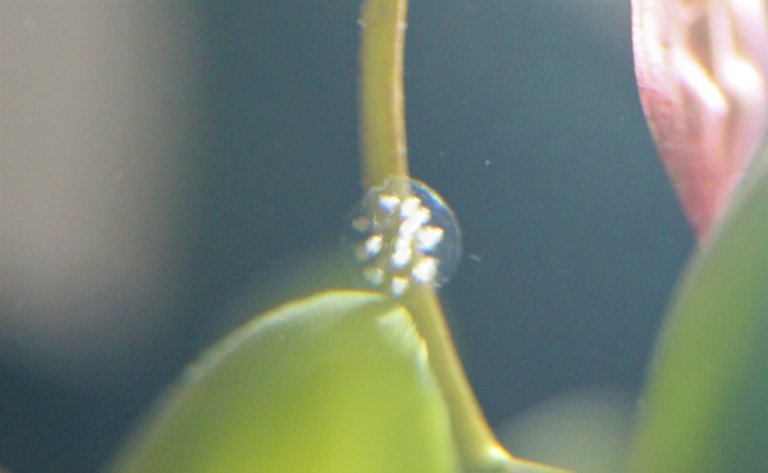
The zebra snail has a scientific name (Neritina natalensis) inhabits Suriname and the coasts of South American countries, such is the case of Brazil, they are highly sought after and sold in the world of aquariums because they are excellent algae eaters and help maintain the aquarium. very clean! my goal is to see a bit the embryonic development of the snail! In this photo you can clearly see the eggs that are placed on any surface, they are covered with a capsule that keeps them protected from external agents!😋😋
El caracol zebra lleva como nombre cientifico (Neritina natalensis) habita en surinam y costas de paises suramericanos tal es el caso de Brasil, son muy buscados y vendidos en el mundo de la acuarofilia por que son excelentes comedores de algas y ayudan a mantener el acuario muy limpio! mi objetivo es ver un poco el desarrollo embrionario del caracol! en esta foto puedes ver claramente los huevos que son colocados en cualquier superficie, estan cubierto de una capsula que los mantiene protegino de agentes externos! 😮👨🏫
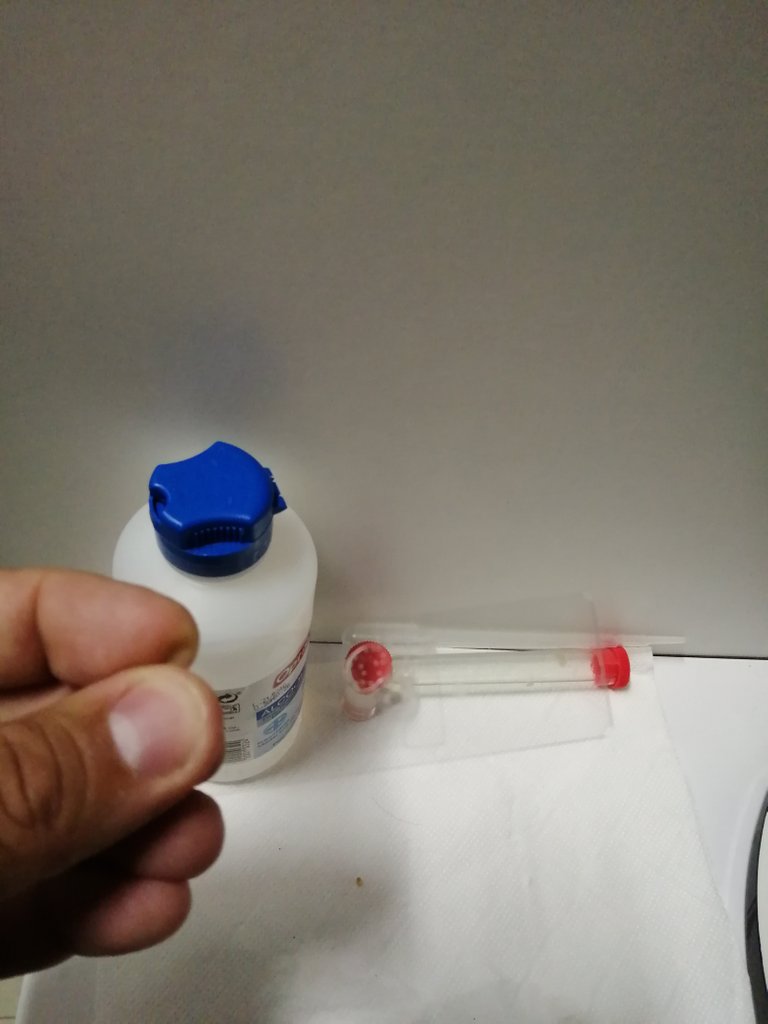
The Neritina life cycle is very fast, taking no more than 30 days to complete its gestation! the eggs have a "white" color, they are oval and covered by a layer of viscous albumin that helps them to stay protected and at the same time produces nutrients! for my experiment I took a sack of neritin eggs with a dropper and placed it under the microscope with several magnifications!😮😮
El ciclo de vida Neritina es muy rapido no demorando mas de 30 dias para completar su gestacion! los huevos tienen un color "blanco" son ovalados y cubiertos por una capa de albumina viscosa que los ayuda a mantenerse protegidos y al mismo tiempo produce nutrientes! para mi experimento tome un saco con huevos de Neritina con un gotero y lo coloque al microscopio con varios aumentos!😮😲

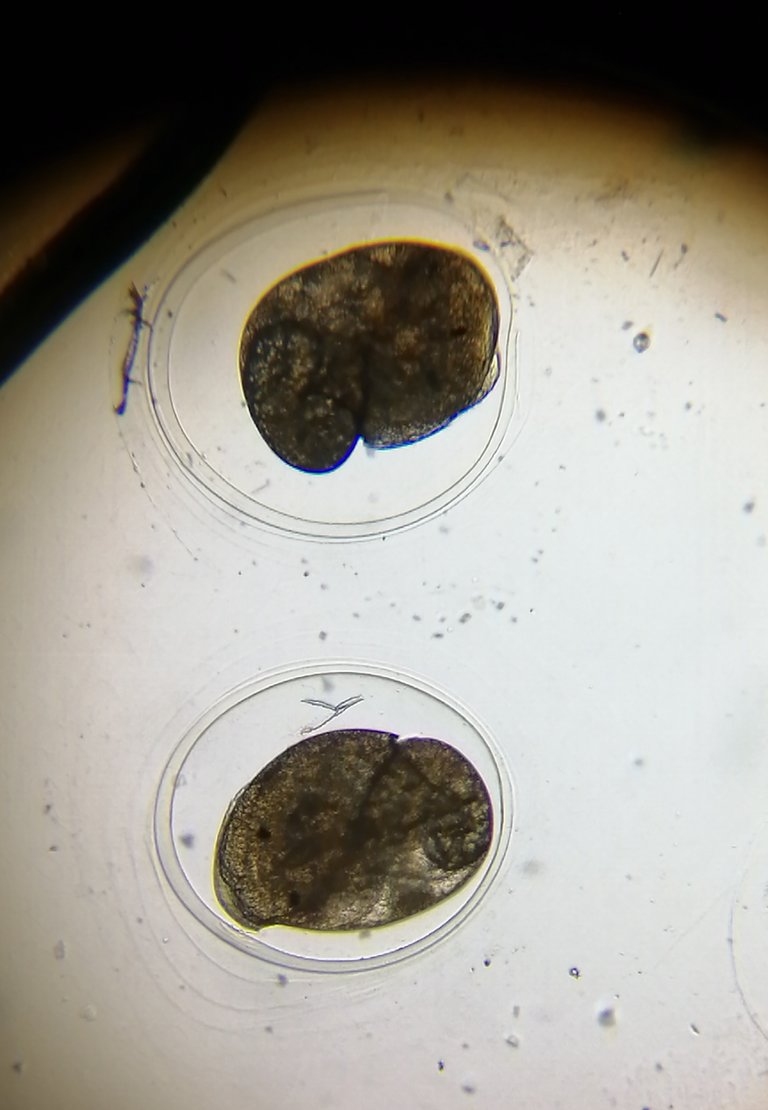
Very little is known about the biology of the animal, from what I saw on the internet the work that I use as a reference is the first to describe the embryonic state, I think my small project would be the second to describe the gestation of Neritina, this snail inhabits funds muddy fertilization occurs internally and the eggs are encapsulated to protect them until they reach the famous larval stage called (Veliger)😮😮
Se conoce muy poco sobre la biologia del animal, por lo que vi en internet el trabajo que utilizo como referencia es el primero en describir el estado embrionario, creo que mi pequeño proyecto seria el segundo en describir la gestacion de Neritina, este caracol habita fondos fangosos la fertilizacion ocurre internamente y los huevos son encapsulados para protegerlos hasta llegar al famoso estado larvario llamado (Veliger)🙂🙂
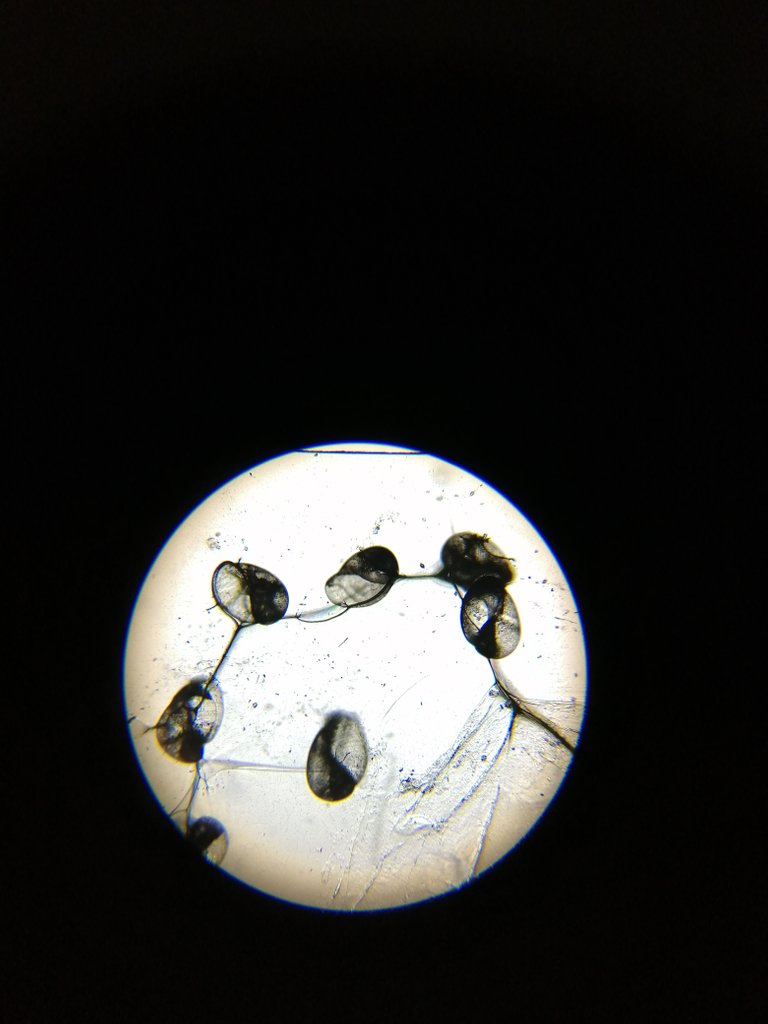
When fertilization occurs, the male snail joins the female, passes its copular organ under the female to fertilize the eggs internally! the capsules where the eggs develop are surrounded by the liquid with albumin! According to the author, more than 68 eggs can be deposited in each spawning, but in my case there were only less than 10😮
Cuando ocurre la fertilizacion el caracol macho se junta con la hembra, pasa su organo copular por debajo de la hembra hasta fertilizar los huevos internamente! las capsulas donde se desarrollan los huevos estan rodeadas por el liquido con albumina! segun el autor pueden ser depositados mas de 68 huevos en cada desove, pero en mi caso solo habian menos de 10🥚🥚🥚🥚
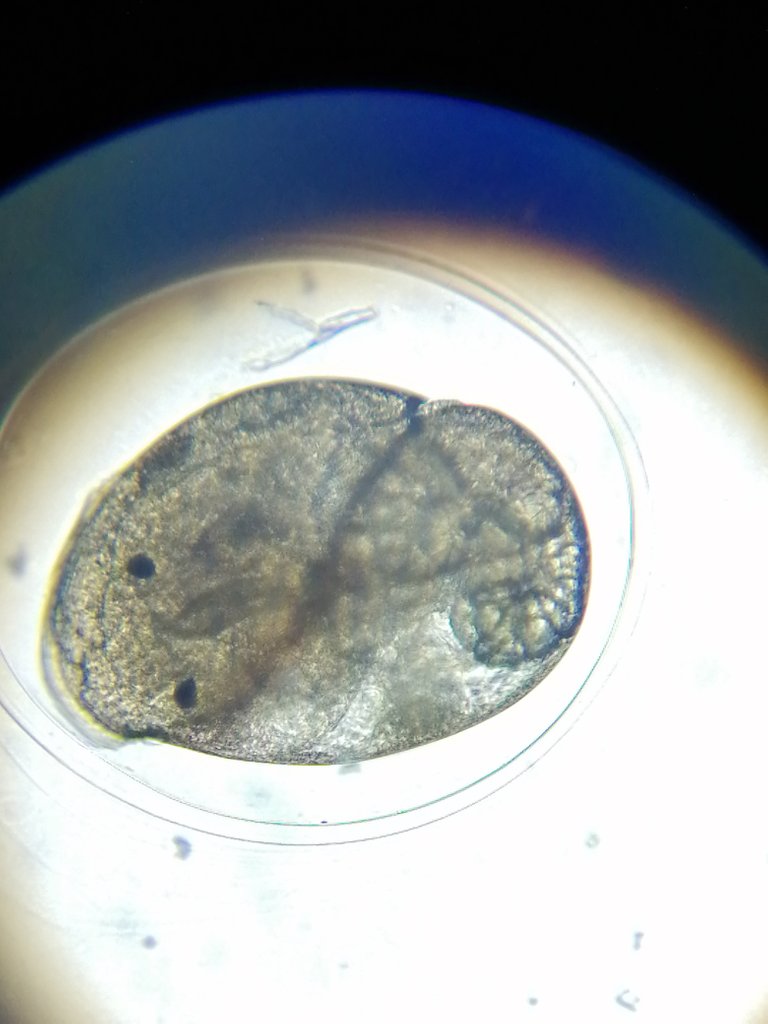

In just 11 days we can already differentiate some organs and movement in the eggs, this phase is called veliger, and from what I observe it is a phase that takes a few days before Neritina is fully developed and leaves the albumin capsule!🤩🤩
En tan solo 11 dias ya podemos diferenciar algunos organos y movimiento en los huevos a esta fase se le llama veliger, y por lo que observe es una fase que demora pocos dias antes de Neritina esta completamente desarrollado y abandonar la capsula de albumina!😮😮
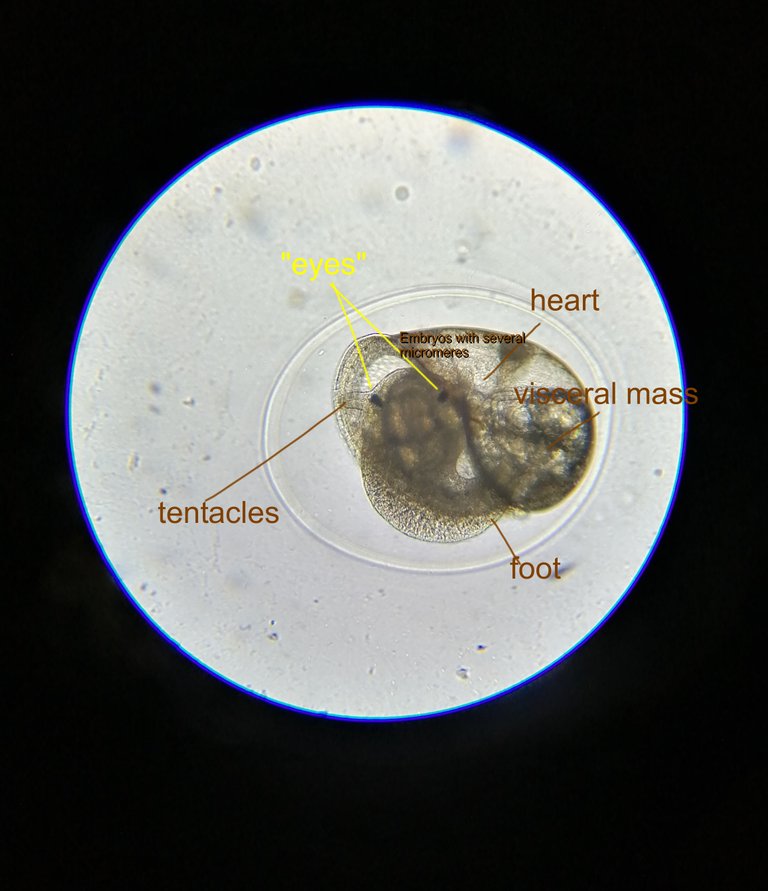
Already around 20 days the embryo is complete and the snail performs the movements to break the sac and go outside, it is at this stage where its digestive system is developed and can feed on micro algae!🤩🤩
Ya alrededor de 20 dias el embrion esta completo y el caracol realiza los movimientos para romper el saco y salir al exterior, es en esta etapa donde su sistema digestivo esta desarrollado y puede alimentarse de micro algas!😮😮
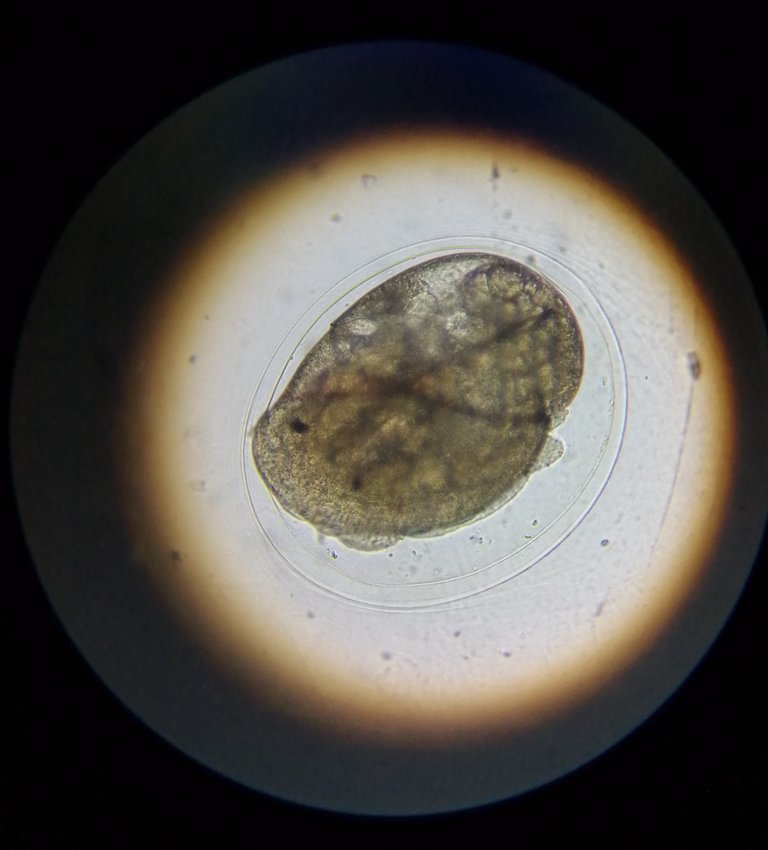
EXPANDED VIEW OF ORGANS🙂, VISTA SOBRE LOS ORGANOS🧠👨🎓👨💻
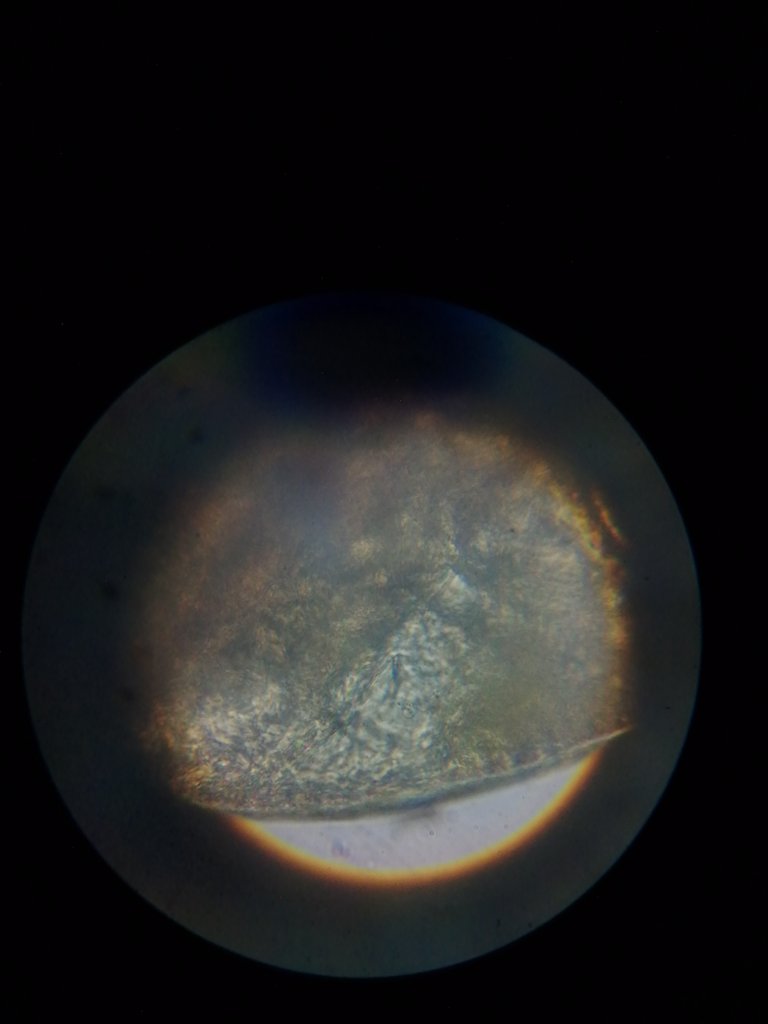
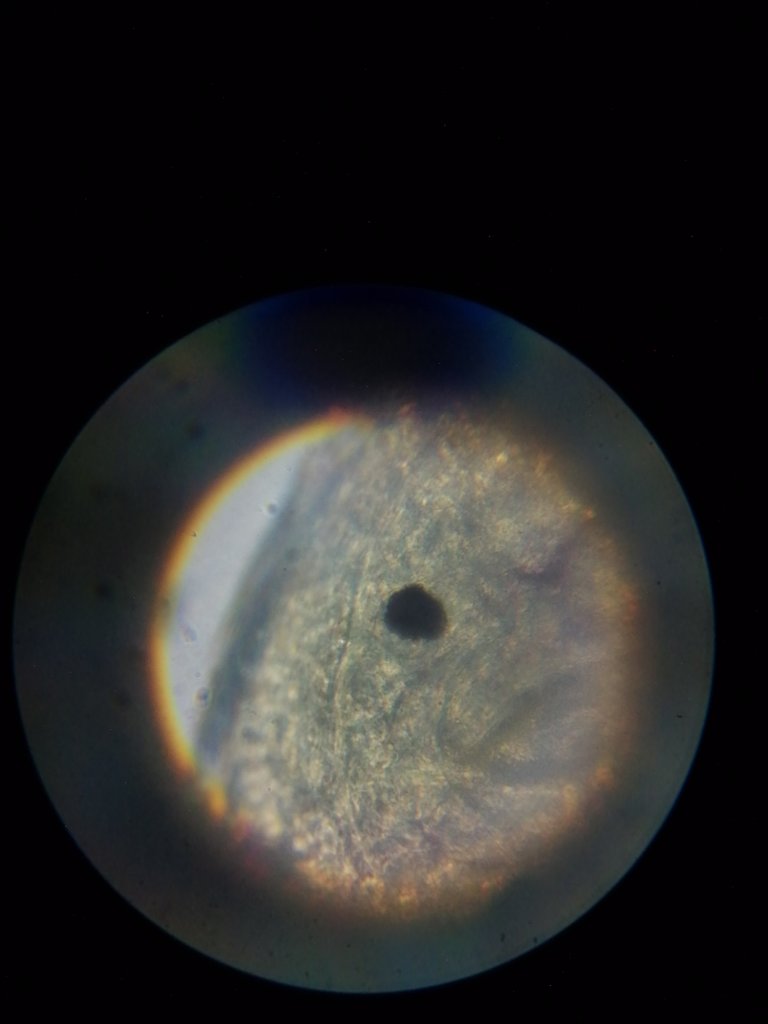
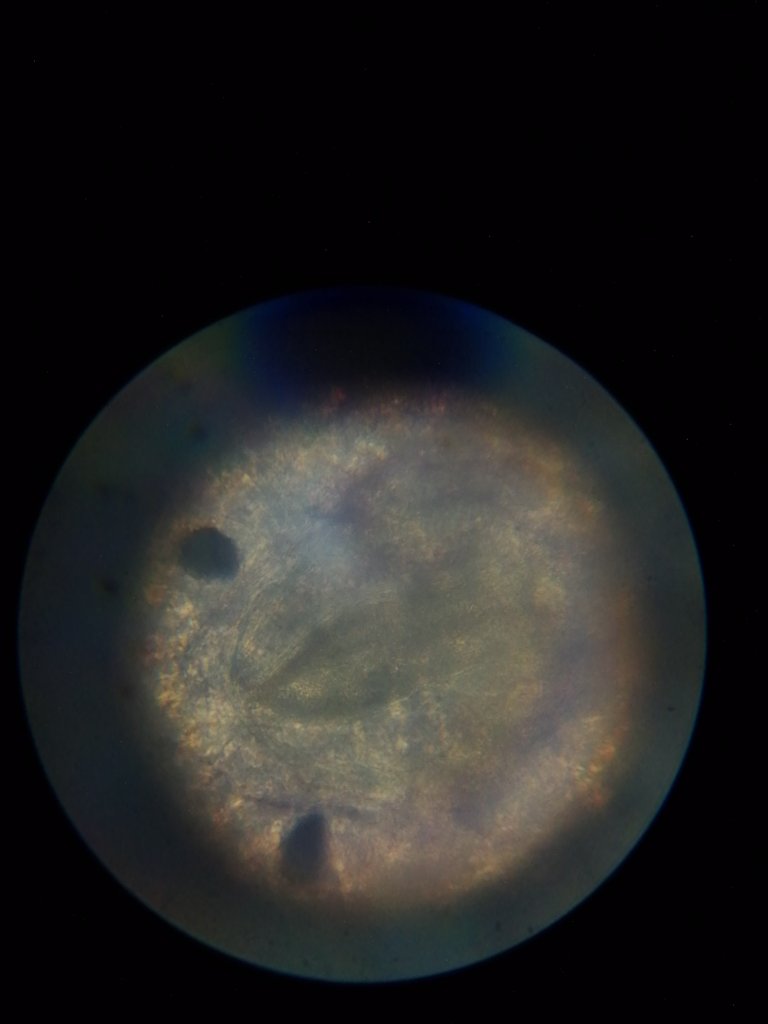
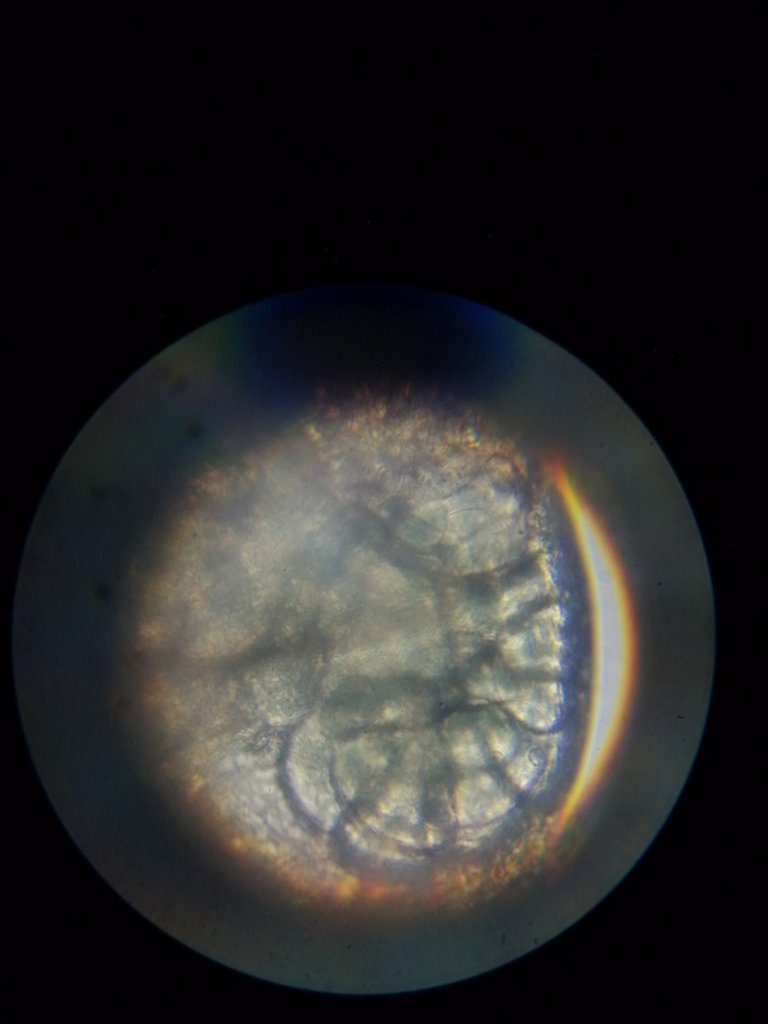
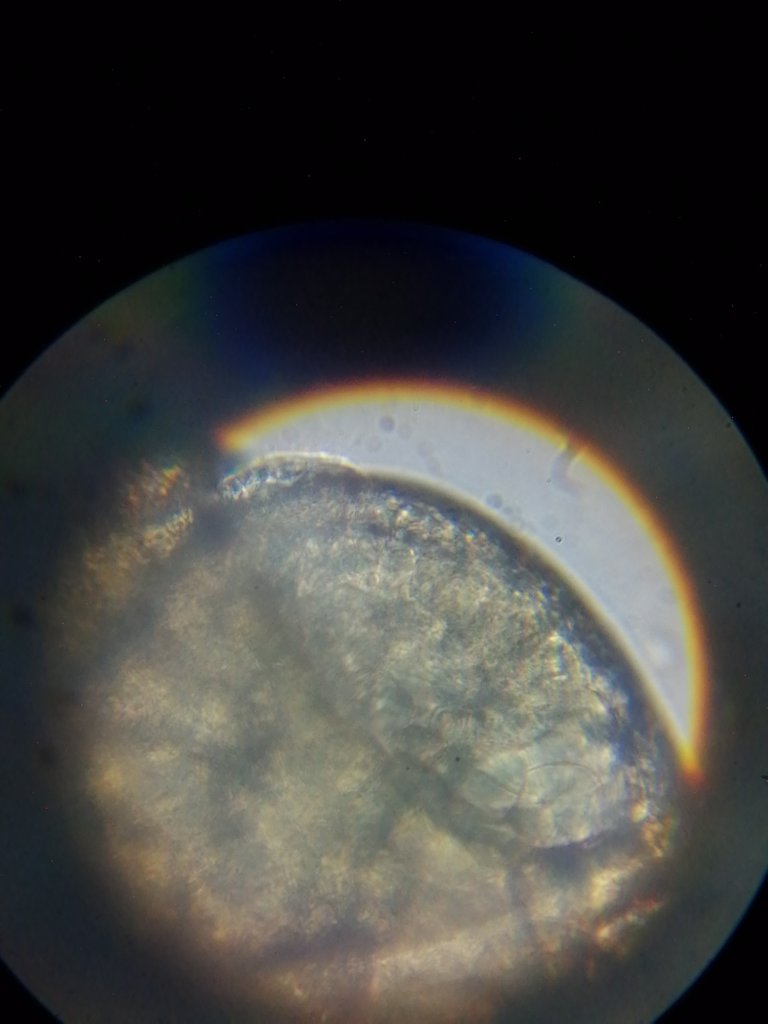
















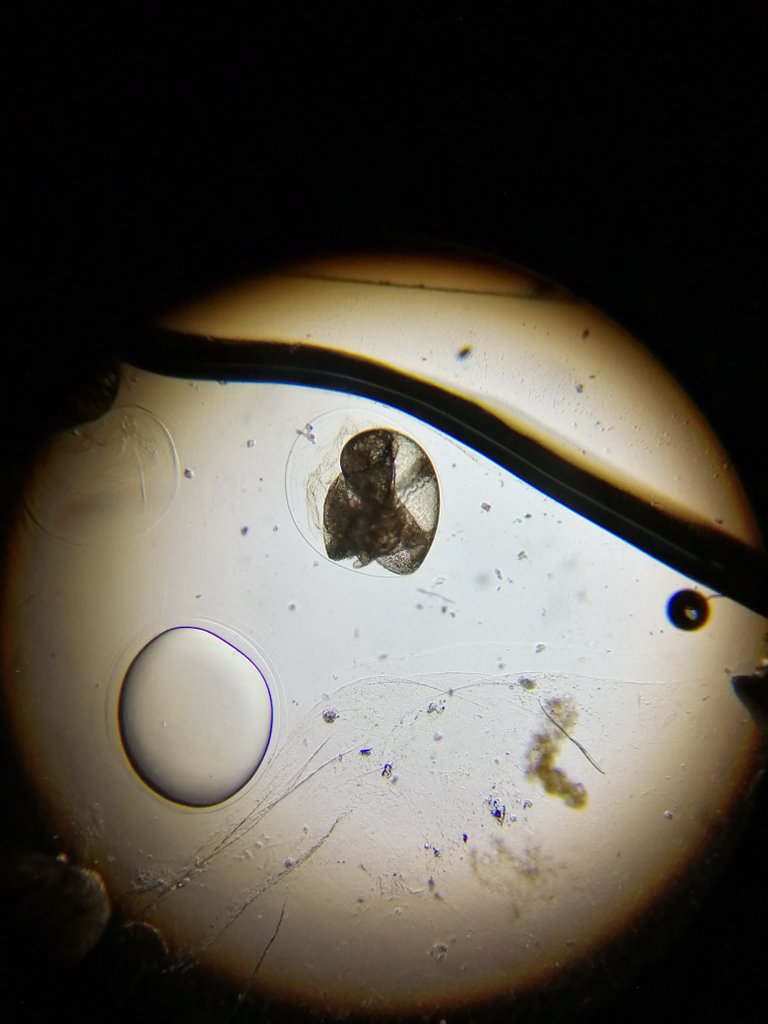
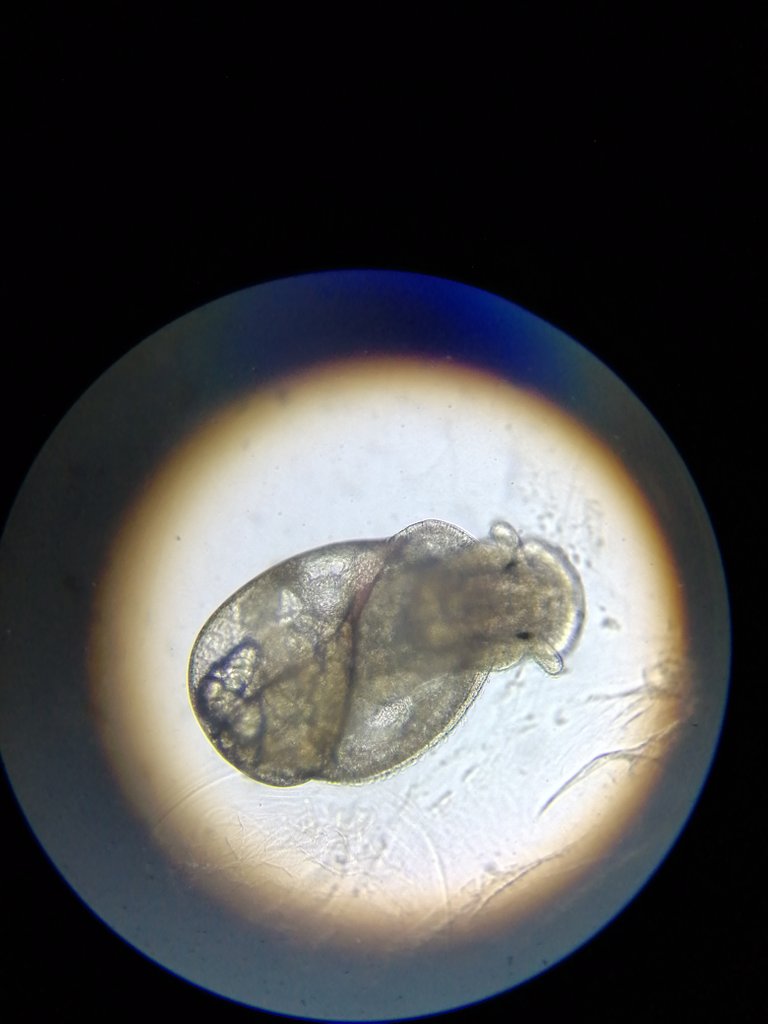
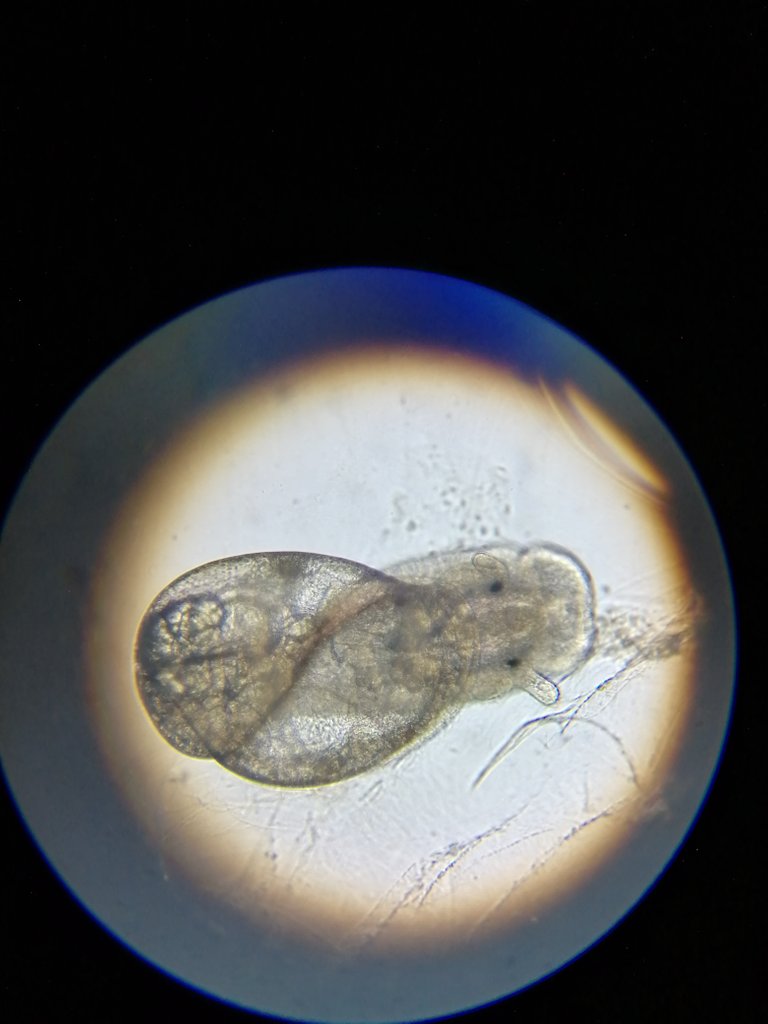
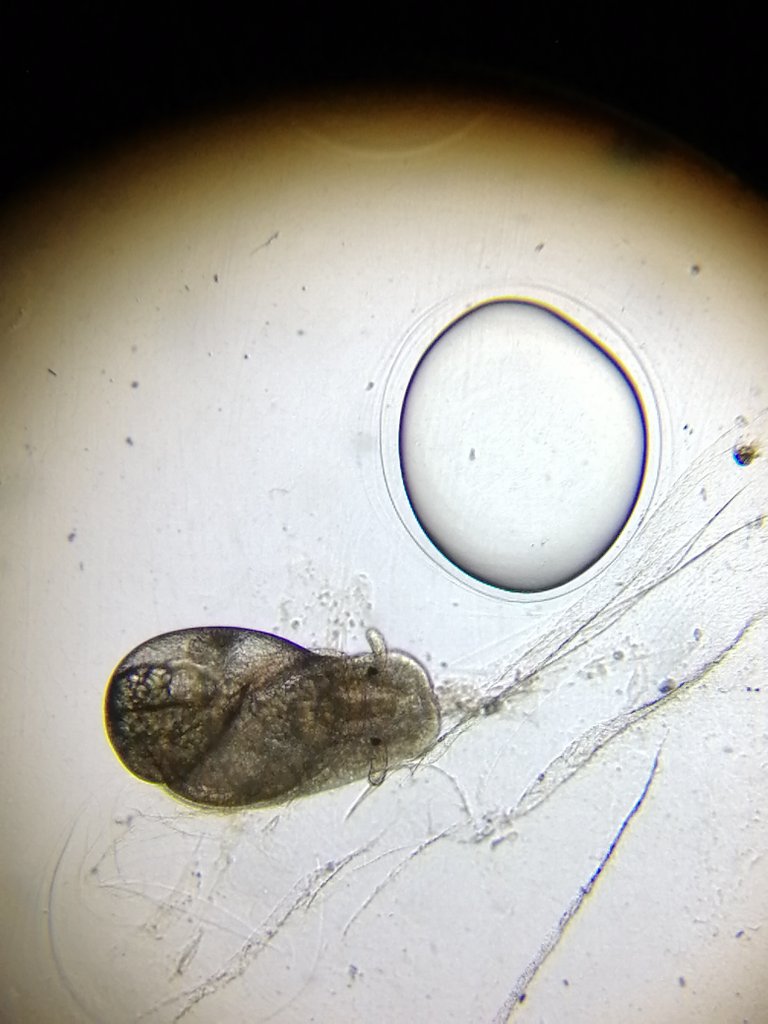



Sorry, out of BEER, please retry later...
Yay! 🤗
Your content has been boosted with Ecency Points, by @oscurity.
Use Ecency daily to boost your growth on platform!
Support Ecency
Vote for Proposal
Delegate HP and earn more
The phylum Mollusca is one of the most diverse animal phyla. It is interesting to see the developmental stages of this particular species in real-time. Thumbs up for a really nice job.
Thanks for your contribution to the STEMsocial community. Feel free to join us on discord to get to know the rest of us!
Please consider supporting our funding proposal, approving our witness (@stem.witness) or delegating to the @stemsocial account (for some ROI).
Please consider using the STEMsocial app app and including @stemsocial as a beneficiary to get a stronger support.